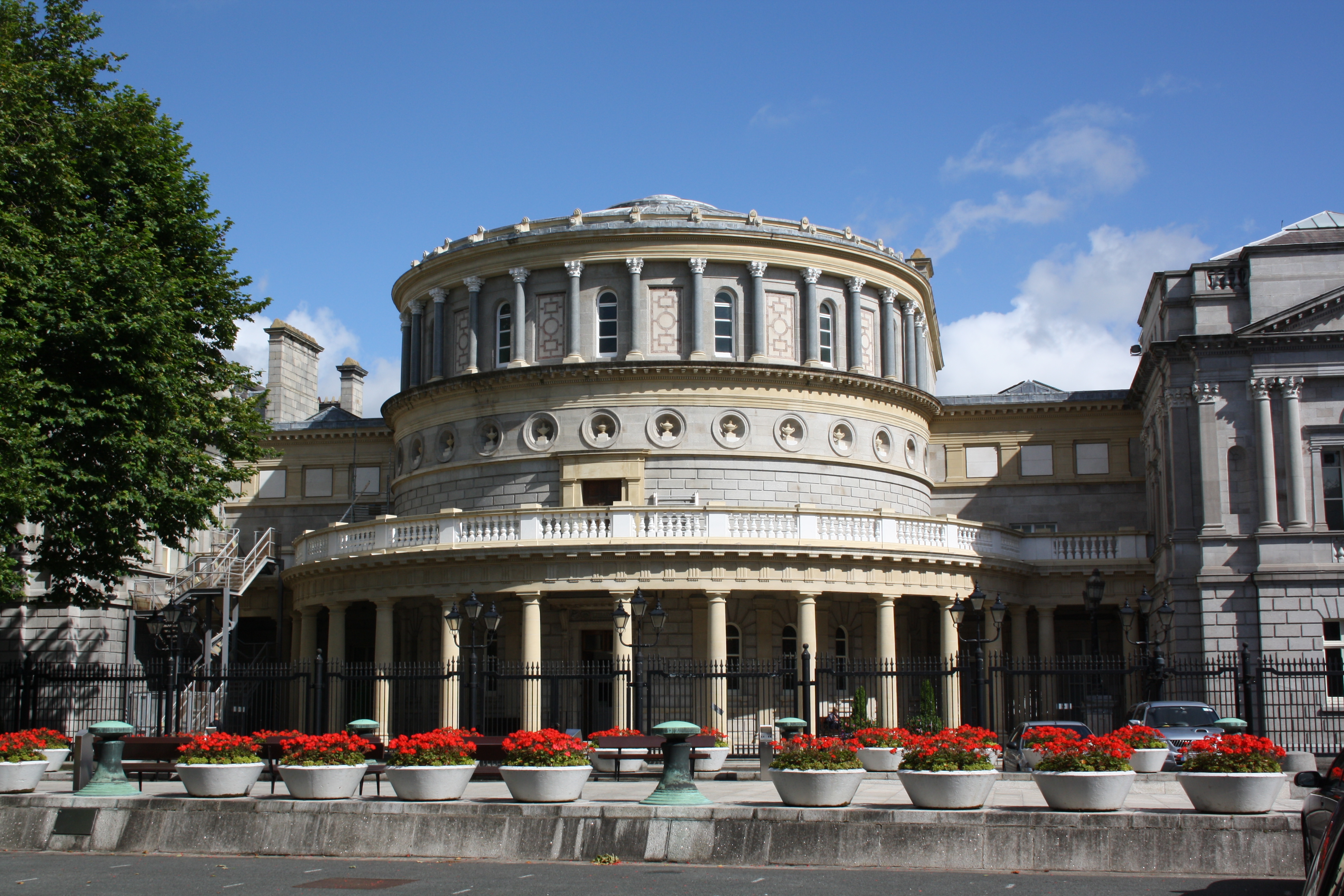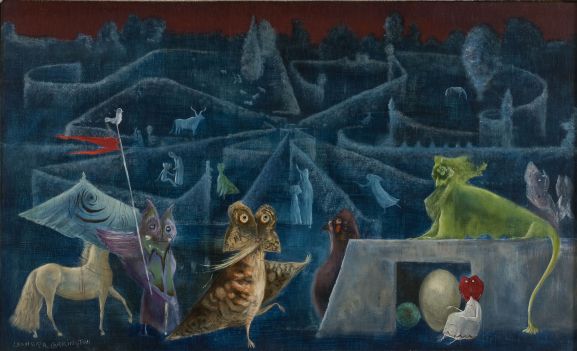Letter from James Joyce to Ezra Pound, dated October 29, 1921, announcing the completion "this evening" of
Ulysses. This note, clearly penned within an hour or so of finishing the novel, testifies to the intimate relationship between Joyce and Pound. Pound had been reading and reacting to
Ulyssesthroughout its gestation, and played an important role in bringing it to the attention of the broader literary world.Also displayed is the telegram Joyce sent to Pound the day the book appeared (on Joyce's own birthday), February 2, 1922: "Ulysses published thanks for all your help".

Letter from Harriet Weaver, publisher of Ulysses, to Kate Buss, dated February 7, 1924. Weaver explains that an English edition of the novel was published in London by The Egoist Press in an edition of 2000 copies for private subscription, of which 400 "were seized and burned by the New York postal censorship authorities".
Ulysses was not allowed to enter or be published in the United States until 1934, twelve years after its initial appearance. Weaver also mentions that Joyce is working "though under very difficult conditions [cause of his eye problems] at his new book" (Finnegans Wake, finally published in 1939).

Postcard from George Bernard Shaw to Ezra Pound, dated March 8, 1922, about his refusal to subscribe to
Ulysses, beginning "What aileth three, Ezra?"… and stating he would see Joyce and his lady bookseller "d------------d first" before he would pay "fifty times what M. Joyce could buy my entire works for." Pound was taking Shaw to task for stating that
Ulysses was "a revolting record of a disgusting phase of civilization." On a second card dated March 16, Shaw declares "Joyce has any quantity of literary and even of dramatic competence; but he has to please me and not you before he can succeed, because I am through with my wild oats, whilst you are still larking with life."


Pictorial postcard from George Bernard Shaw to Ezra Pound, dated 20 March, 1922, reproducing Ribera's The Dead Christ, inscribed by Shaw: "Miss Shakespeare consoling James Joyce, who has fainted on hearing of the refusal of his countryman to subscribe for
Ulysses. Isn't it like him?"


Letter from W.B. Yeats to Ezra Pound, dated May 18, 1924, concerning the seizure of copies of
Ulysses. Here Pound tries to enlist the help of his older friend Yeats in getting copies into Ireland, where the book was never officially banned, since it had not been published there. Yeats, always cautious, replies: "You could probably get copies sent in here if nobody knows anything about it but it would be ruinous to let the fact be whispered in Government Offices. Here we have a few intelligent men who have to keep always on the watch not to give clerical ignorance an opportunity to attack."

 Letter from Harriet Weaver, publisher of Ulysses, to Kate Buss, dated February 7, 1924. Weaver explains that an English edition of the novel was published in London by The Egoist Press in an edition of 2000 copies for private subscription, of which 400 "were seized and burned by the New York postal censorship authorities". Ulysses was not allowed to enter or be published in the United States until 1934, twelve years after its initial appearance. Weaver also mentions that Joyce is working "though under very difficult conditions [cause of his eye problems] at his new book" (Finnegans Wake, finally published in 1939).
Letter from Harriet Weaver, publisher of Ulysses, to Kate Buss, dated February 7, 1924. Weaver explains that an English edition of the novel was published in London by The Egoist Press in an edition of 2000 copies for private subscription, of which 400 "were seized and burned by the New York postal censorship authorities". Ulysses was not allowed to enter or be published in the United States until 1934, twelve years after its initial appearance. Weaver also mentions that Joyce is working "though under very difficult conditions [cause of his eye problems] at his new book" (Finnegans Wake, finally published in 1939). Postcard from George Bernard Shaw to Ezra Pound, dated March 8, 1922, about his refusal to subscribe to Ulysses, beginning "What aileth three, Ezra?"… and stating he would see Joyce and his lady bookseller "d------------d first" before he would pay "fifty times what M. Joyce could buy my entire works for." Pound was taking Shaw to task for stating that Ulysses was "a revolting record of a disgusting phase of civilization." On a second card dated March 16, Shaw declares "Joyce has any quantity of literary and even of dramatic competence; but he has to please me and not you before he can succeed, because I am through with my wild oats, whilst you are still larking with life."
Postcard from George Bernard Shaw to Ezra Pound, dated March 8, 1922, about his refusal to subscribe to Ulysses, beginning "What aileth three, Ezra?"… and stating he would see Joyce and his lady bookseller "d------------d first" before he would pay "fifty times what M. Joyce could buy my entire works for." Pound was taking Shaw to task for stating that Ulysses was "a revolting record of a disgusting phase of civilization." On a second card dated March 16, Shaw declares "Joyce has any quantity of literary and even of dramatic competence; but he has to please me and not you before he can succeed, because I am through with my wild oats, whilst you are still larking with life."
 Pictorial postcard from George Bernard Shaw to Ezra Pound, dated 20 March, 1922, reproducing Ribera's The Dead Christ, inscribed by Shaw: "Miss Shakespeare consoling James Joyce, who has fainted on hearing of the refusal of his countryman to subscribe for Ulysses. Isn't it like him?"
Pictorial postcard from George Bernard Shaw to Ezra Pound, dated 20 March, 1922, reproducing Ribera's The Dead Christ, inscribed by Shaw: "Miss Shakespeare consoling James Joyce, who has fainted on hearing of the refusal of his countryman to subscribe for Ulysses. Isn't it like him?"
 Letter from W.B. Yeats to Ezra Pound, dated May 18, 1924, concerning the seizure of copies of Ulysses. Here Pound tries to enlist the help of his older friend Yeats in getting copies into Ireland, where the book was never officially banned, since it had not been published there. Yeats, always cautious, replies: "You could probably get copies sent in here if nobody knows anything about it but it would be ruinous to let the fact be whispered in Government Offices. Here we have a few intelligent men who have to keep always on the watch not to give clerical ignorance an opportunity to attack."
Letter from W.B. Yeats to Ezra Pound, dated May 18, 1924, concerning the seizure of copies of Ulysses. Here Pound tries to enlist the help of his older friend Yeats in getting copies into Ireland, where the book was never officially banned, since it had not been published there. Yeats, always cautious, replies: "You could probably get copies sent in here if nobody knows anything about it but it would be ruinous to let the fact be whispered in Government Offices. Here we have a few intelligent men who have to keep always on the watch not to give clerical ignorance an opportunity to attack."



































.jpg)



